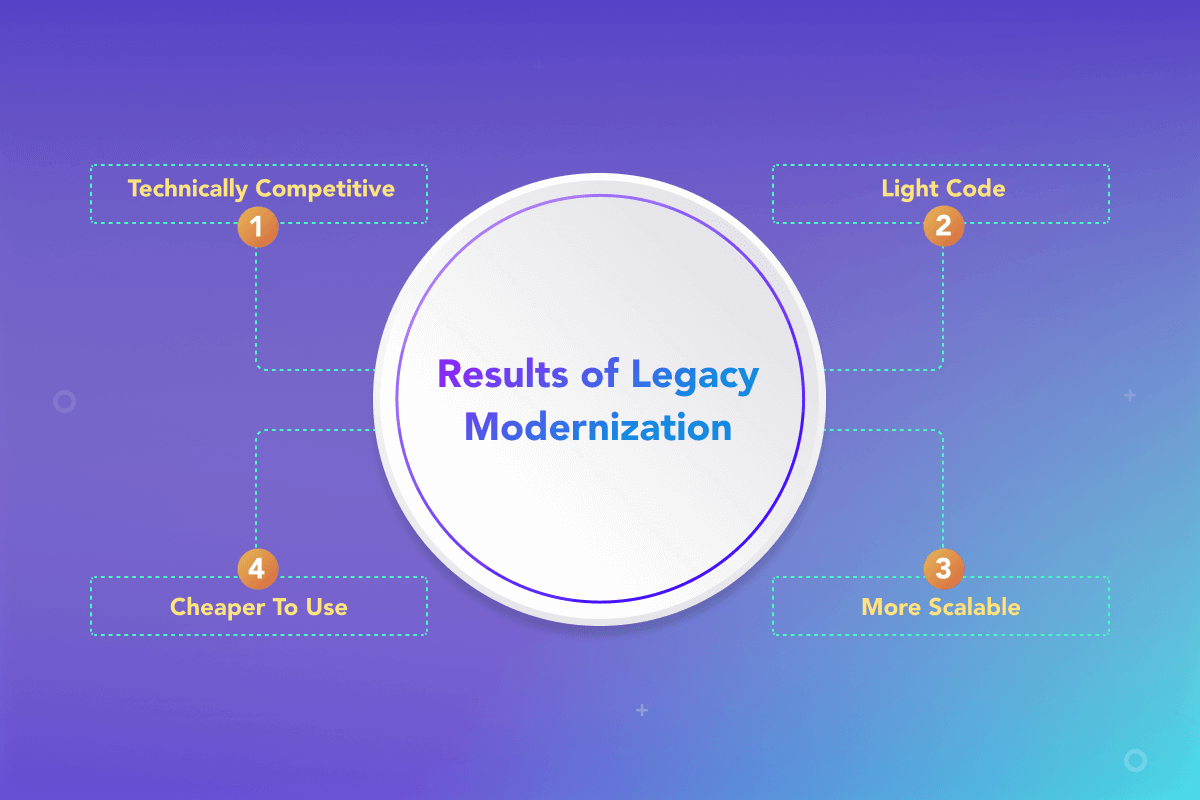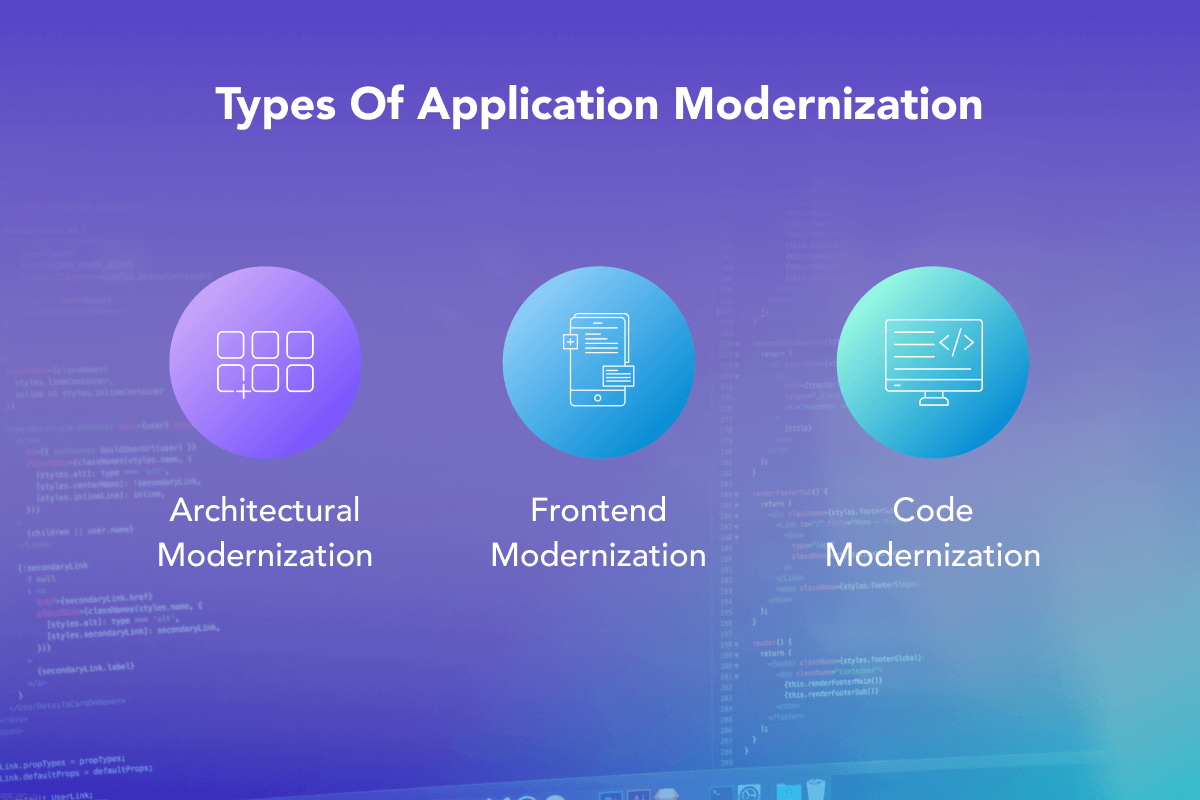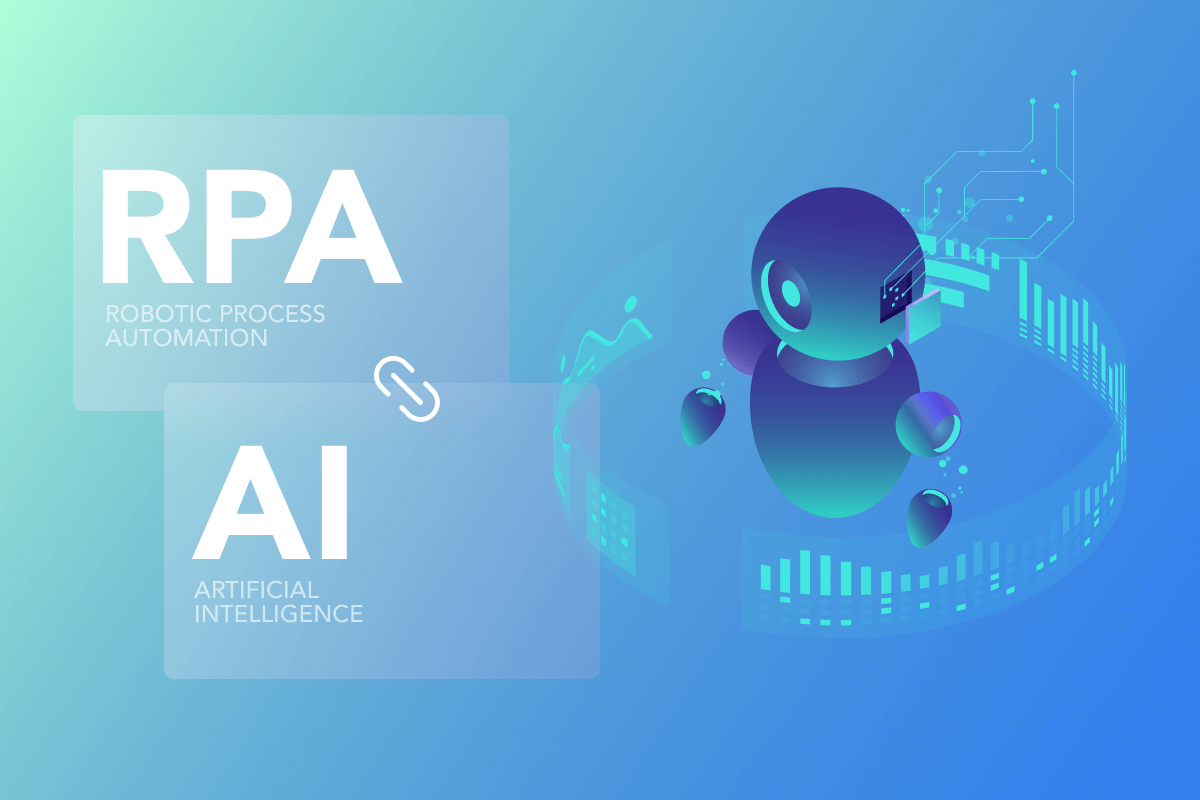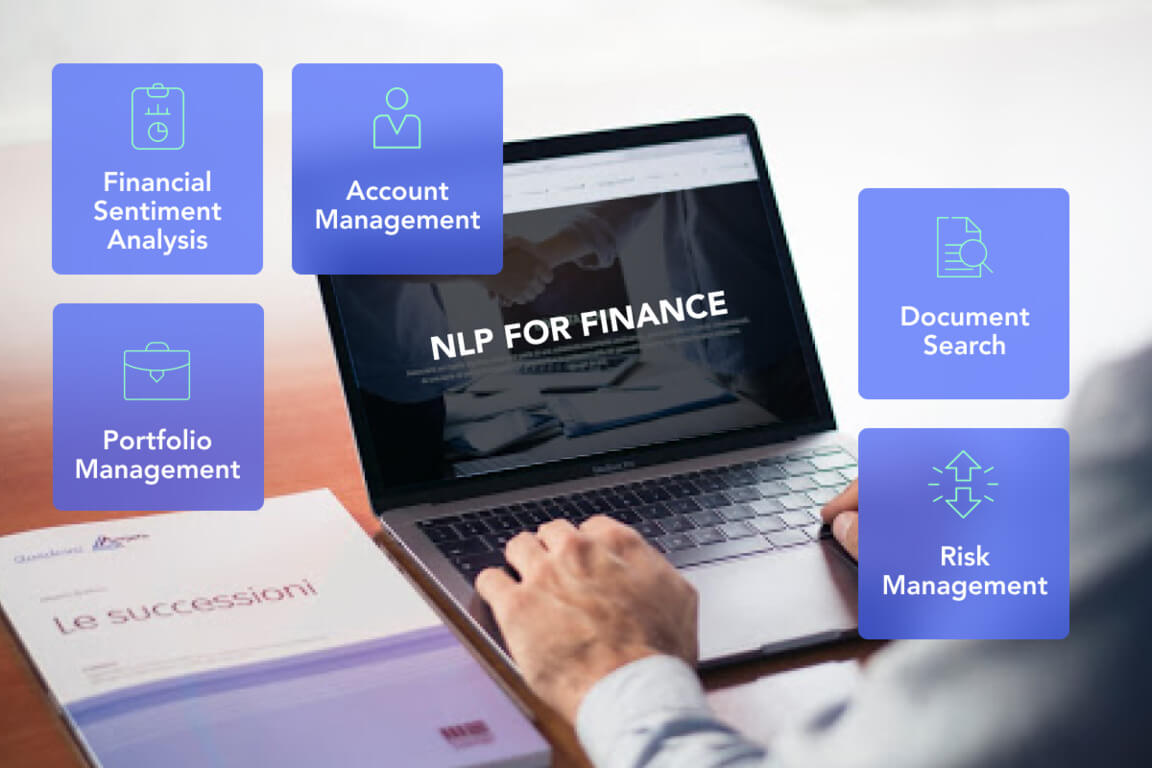Obsolete systems are everywhere across industries. CTOs of utility companies say that their IT systems operate well, but they want them to be more up-to-date, fast, and witty. CTOs of banks say that their IT systems can potentially bring more profit but are outdated and cannot allow new functionality. If this sounds similar to your case, this article touches upon these issues.
Developer companies can dramatically transform and retrofit any obsolete IT ecosystem.
In this article, you will learn about the following:
- Application modernization
- Microservices architecture
- Frontend modernization
- Code modernization for up-to-date libraries
- RPA
- Data modernization
- AI for data modernization
- Augmented analytics
- Cloud migration
Why Legacy Modernization is Always a Hot Topic
Edge trends go at a fast pace, and there always will be something new for the systems to follow. Though, not every software network, even an obsolete one, has to change. Obviously, it takes time and expenses. But if the current network does not cope with strategic requests and buying a new one is rather expensive for the companies, considering legacy modernization solutions is probably the right thing to do.

Developers can change different parts of the systems depending on the company’s goals, applications, data, and platforms.
Common Reasons to Modernize Legacy Applications
There can be many reasons why industries order such an upgrade:
- Cloud services;
- Change of focus to a Service-Oriented Structure;
- Modernization of obsolete systems;
- Demand to continuously sustain the work process.
If a CTO considers changing their application, it will mainly come to changing these pillars.

Microservice Architecture
The path to the cloud lies mainly through microservices, containers, orchestration, and other tools and processes, depending on the objectives. The first represents a very important part of such migration. That is why it is worthy of attention.
Microservices can be regarded both as architecture and a mechanism. They fulfill functions via many tiny services that make primitive tasks and communicate with each other.
What Do Your Systems Get?
Obsolete applications make a solid technical basis for many companies. This means that if the entire system falls, business continuity is at risk. But this risk is less if the system has a microservice architecture.
- High scalability.
If your system has a microservice architecture, you can scale each unit separately. This means that you can have as many new services as you want.
- High speed.
You can easily infuse changes into the system and roll them back.
- Lower risks for the business.
If one service falls, it won’t take down the company. Microservices are very popular, so any company should consider them.
Frontend Modernization
It’s about solving complex issues of legacy applications and putting a new coat of paint on the front end. By renewing the front end, companies can reap higher revenues faster because it will solve the obvious pain point of end-users.
Frontend modernization includes GUIs, mobile devices, integrating with popular UIs, and desktop applications. And all these activities aim at streamlining business processes.
Usually, companies migrate their frontend technology to solve several issues:
- A legacy application does not support modern browser features and rich user interfaces;
- Technical under-functioning;
- Dependencies on libraries and frameworks that are hard to maintain.
Frontend modernization is not difficult and starts from choosing pages to modernize the application. Then, it goes to implementing these pages with the new technology, user interface, and data structure.

Use Cases of New Front End
For example, you are a CTO in a large agricultural business with many websites. Your new front end could combine all your scattered expertise into one convincing solution. The complete, user-friendly, and beautiful front end will make potential clients of your company contact you more often.
Or, for example, you work in a banking business. A modernized front end can speed up credit approval for your clients and raise conversion. It could make it easy for them to find their qualification and calculate their credit score.
Furthermore, front-end developers have a new trend now. They offer micro front ends to make the stone continuously rolling. McKinsey assures that:
“Software development has firmly established the principles of the selective modernization of individual components and business capabilities along with maximum reusability.”
To sum up, a new front end can be the first and easier step for the modernization of obsolete systems. And it will be already noticeable both for businesses and clients.
Code Modernization for Up-to-Date Libraries
Obsolete systems are a part of our work lives. Why not modernize them and make our work lives easier? Usually, developers use modern software libraries to get competitive outputs. But good results are not solely conditioned by good libraries. Good code itself plays a big role. Code modernization is a long-term prospect. Still, when it comes to the performance of a system, code matters.
If your legacy code is obsolete and the libraries are new, you need code modernization. The code should meet minimum library version compatibility requirements.
To generate optimal code, developers use compilers and apply optimal software libraries. Or they can do code refactoring. Also, while changing the code, CTOs keep in mind that the programming models can interfere and that it is necessary to use the resources efficiently. This concerns both cases when they re-architecture their current applications and architecture entirely new applications for their current or new machines.
Tip! A few useful AI software for your consideration.
- Microsoft’s Azure Machine Learning Studio for machine learning integration to improve services and prevent fraud;
- Google’s TensorFlow for processing large volumes of data and getting correct results for your tasks;
- PyBrain Python is an easy library for neural networks that contain many ML algorithms.
RPA
Now, automating enterprises is a must-have for large companies. Robotic process automation RPA is a comparatively new trend in the business world. But the companies that deployed systems based on RPA can already appreciate their benefits. Currently, these companies automate their businesses using so-called AI software robots.

Companies and AI Software Robots
Unlike traditional systems, AI software robots watch users perform tasks in the application’s GUI, create a list of actions to perform these tasks, and then reproduce these tasks in the GUI. This means cutting off many intermediary chains in the system.
AI software robots have much influence on software development companies themselves. These are the systems that made possible remote IT infrastructure management. Software developers use RIM for the first line of IT support.
Which Industries Benefit from AI Software Robots the Most
Now, a variety of industries apply RPA and AI software robots. First of all, these are the industries that lead their businesses via computers – utility, finance, e-commerce, and similar. Banks, electricity companies, and chain e-shops can remotely manage their computer hardware and software, servers, data storage, and security devices of IT systems.
What makes AI software robots very attractive for businesses is their “modesty.” They do not require any physical space to work. Each AI software robot has its virtual workstation, works in a virtual environment, and can interpret the screen display electronically.
In this way, AI software robots can perform routine tasks, can be extremely scalable, and are much easier and cheaper to deploy.
Data Modernization
One of the questions that CTOs face is whether developers can easily access data in their company for internal use. Because if developers have a hard time accessing the data, the workflow goes slow and not right. This situation has to be fixed. Data for internal use must be easily accessible.
AI for Data Modernization
The current shift from monolithic applications to cloud environments requires data modernization. For better results, CTOs who want to work with the cloud across industries must move their data from legacy databases to the database lakes in the cloud.
Data is scattered in many systems, and rendering these systems is difficult to integrate. Considering this difficulty, this new data approach allows companies to connect these sources as well as structured and unstructured hard-to-get data.
Real-time data is vital for running businesses, for example, to deliver recommendations or in-time optimization to users. As well, data is vital for business analytics to keep businesses competitive and profitable all the time.
Augmented Analytics
What companies lack in analytics is specific analytical data to the right request. This information can give them a competitive advantage. Augmented analytics, as a new trend in data modernization, addresses this challenge. Solutions based on AI and ML can analyze data and get the precise correct information for queries.

Companies can virtualize this data when they find and connect different data sources. This means they can now get volumes of data to explore, and they do not need to know where this data is physically located or what format it has. They can get copies.
Medium precisely describes how CTOs can receive specific analytical information for their companies:
- A software engineer issues a query to the coordinator;
- The coordinator hands it on to the edge nodes;
- The nodes communicate with peers;
- Nodes and peers analyze the data and the query;
- The coordinator receives the results from the nodes.
What can even accelerate the search process is parallel processing. As well, parallel processing presupposes the wide scalability of this process. In this way, augmented analytics provides companies with specific data-driven analytics and puts businesses ahead of the competition.
Cloud Migration
The cloud can offer IT ecosystems a virtual pool of scalable computing, network, and storage resources.
When CTOs want a vast infrastructure, they must migrate their IT ecosystems to the cloud. When you do Cloud migration, you move data, legacy business applications, and IT processes from in-house data centers and architecture to other data centers and the cloud.
Cloud migration can take different forms for a company:
- Lift and shift;
- Shift to SaaS;
- Application refactoring;
- Replatforming.
It is up to CTOs to decide how it is better for the system to migrate. Once a company decides to use cloud migration services, migration usually takes 7 phases:
- Evaluate your IT infrastructure;
- Identify the applications to move;
- Select your cloud provider;
- Protect data and operations while moving;
- Get SLA with the services provider;
- Perform cloud migration;
- Validate successful relocation.
Migration is not a fast decision and involves many parties. Though, the process of migrating itself is not long and can take 1-2 months.
Softengi is an outsource software development company specializing in AI solutions for businesses. It can modernize and migrate IT ecosystems and make them capable of coping with new business challenges.
Conclusion
Legacy Modernization Trends represent the backbone of many companies that provide everyday important services to people and other businesses. Legacy modernization is a continuous process of making these systems more modern and capable of interacting with other modern systems. It encompasses application modernization, data modernization, and cloud migration. Striking differences make new trends, such as AI software robots and RPA with remote infrastructure management. As well, augmented analytic models are an impressive new trend. It can go far on the Internet, copy, and analyze data to solve the most specific requests.





